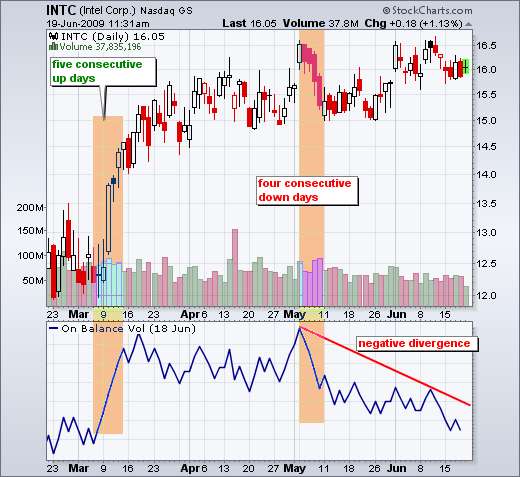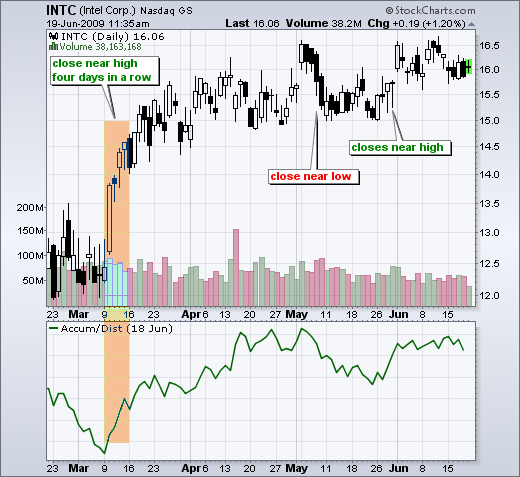|
|
On Balance Volume (OBV) and the Accumulation Distribution Line are both volume-based indicators that are cumulative. Periodic values are added or subtracted to form a chart (time series plot) that can be compared to the underlying security. The difference between these two indicators is based on the relative close. OBV compares the close with the prior close, while the Accumulation Distribution Line compares the close with the high-low range.
Developed by Joe Granville, OBV is based on a relatively simple calculation. Volume is added when the stock closes above its prior close and subtracted when the stock closes below its prior close. Granville theorized that volume leads prices. Gains or losses on high volume are significant, while gains or losses on low volume are deemed less significant. On the Intel chart, OBV declined sharply in early May as the stock fell four days in a row. OBV never recovered and continued lower into June. Also notice that a negative divergence formed over the last two months. (Note: red candlesticks indicate a lower close; black candlesticks indicate a higher close).
Developed by Marc Chaikin, the Accumulation Distribution Line is based on the level of the close relative to the high-low range for the period. Without getting into the calculation details, a close above the midpoint of the high-low range will be positive (between 0 and +1), while a close below the midpoint will be negative (between 0 and -1). At the extremes, a close on the high equals +1, a close on the low equals -1 and a close in the midpoint equals 0. This number is then multiplied by the period’s volume to create the periodic values. Closes near the high on high volume will push the Accumulation Distribution Line higher, while closes near the low on high volume will push it lower.




